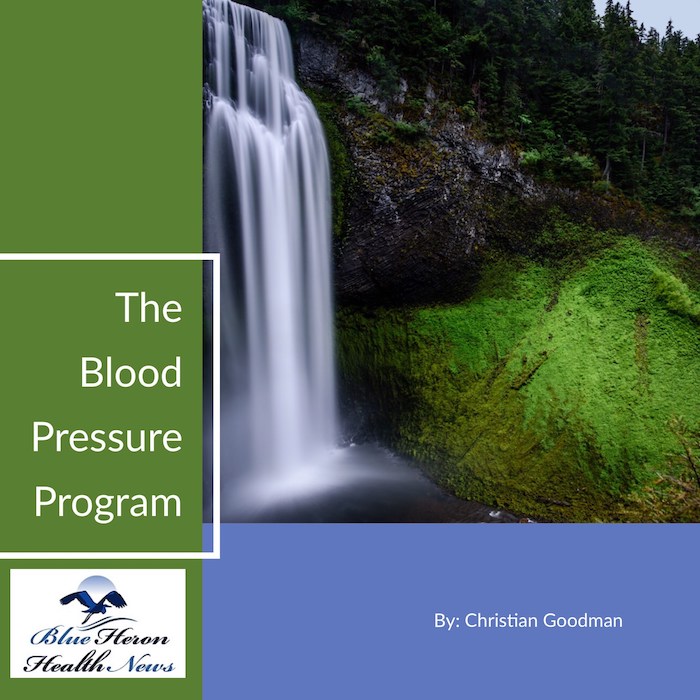
The Bloodpressure Program™ by Christian Goodman The Bloodpressure Program™ by Christian Goodman This was all about The Bloodpressure Program. It is highly recommended for all those who are suffering from high blood pressure. Most importantly, it doesn’t just treat the symptoms but also addresses the whole issue. You can surely buy it if you are suffering from high blood pressure. It is an easy and simple way to treat abnormal blood pressure.
What is hypotension?
Hypotension, commonly known as low blood pressure, is a condition where the blood pressure in the arteries is lower than normal. While the specific threshold for defining low blood pressure can vary, it is generally considered to be hypotension when the systolic blood pressure is less than 90 millimeters of mercury (mm Hg) and/or the diastolic blood pressure is less than 60 mm Hg.
Types of Hypotension
- Orthostatic Hypotension:
- Also known as postural hypotension, this occurs when there is a sudden drop in blood pressure upon standing up from a sitting or lying position. This type of hypotension is often accompanied by dizziness, lightheadedness, or fainting and can be caused by dehydration, prolonged bed rest, pregnancy, or certain medications.
- Neurally Mediated Hypotension:
- This type occurs due to a miscommunication between the heart and the brain, leading to a sudden drop in blood pressure. It can happen after standing for long periods or after experiencing a stressful or emotional situation.
- Postprandial Hypotension:
- This refers to a drop in blood pressure that occurs after eating. It is more common in older adults and can be influenced by the type of food consumed, meal size, and the body’s digestive response.
- Severe Hypotension (Shock):
- Severe hypotension can be life-threatening and is often associated with shock. It can result from severe blood loss, infection (septic shock), heart problems, or severe allergic reactions (anaphylactic shock).
Causes of Hypotension
Hypotension can have various causes, including:
- Dehydration:
- Inadequate fluid intake or excessive fluid loss can lead to low blood pressure.
- Heart Problems:
- Conditions such as heart failure, bradycardia (abnormally slow heart rate), or heart attack can reduce the heart’s ability to pump blood effectively.
- Endocrine Disorders:
- Hormonal imbalances, such as those caused by adrenal insufficiency (Addison’s disease), hypothyroidism, or diabetes, can affect blood pressure.
- Medications:
- Some medications, including diuretics, alpha-blockers, beta-blockers, and certain antidepressants, can lower blood pressure.
- Nutritional Deficiencies:
- A lack of essential nutrients, such as vitamin B12 and folate, can affect blood pressure by impacting red blood cell production.
- Blood Loss:
- Significant blood loss from an injury or internal bleeding can reduce blood volume and lead to hypotension.
- Infection:
- Severe infections can lead to sepsis, which can cause a dangerous drop in blood pressure.
- Allergic Reactions:
- Severe allergic reactions (anaphylaxis) can cause widespread vasodilation and a sudden drop in blood pressure.
Symptoms of Hypotension
Symptoms of hypotension can vary depending on the severity and the underlying cause but may include:
- Dizziness or lightheadedness
- Fainting (syncope)
- Blurred or fading vision
- Nausea
- Fatigue or weakness
- Confusion or difficulty concentrating
- Cold, clammy, or pale skin
- Rapid, shallow breathing
- Thirst
In severe cases, hypotension can lead to shock, characterized by rapid breathing, weak pulse, cold and clammy skin, confusion, and loss of consciousness. Shock requires immediate medical attention.
Diagnosis of Hypotension
Diagnosing hypotension involves:
- Medical History and Physical Examination:
- A healthcare provider will take a detailed medical history and conduct a physical examination to identify potential causes.
- Blood Pressure Measurement:
- Blood pressure readings are taken in different positions (lying down, sitting, and standing) to assess for orthostatic hypotension.
- Blood Tests:
- Blood tests can help identify underlying conditions, such as anemia, dehydration, or hormonal imbalances.
- Electrocardiogram (ECG or EKG):
- An ECG can help detect heart problems that may be causing hypotension.
- Echocardiogram:
- This imaging test provides a detailed view of the heart’s structure and function.
- Tilt Table Test:
- This test involves changing the patient’s position from lying to standing while monitoring blood pressure and heart rate. It helps diagnose neurally mediated hypotension and other forms of orthostatic hypotension.
Treatment of Hypotension
The treatment of hypotension depends on the underlying cause and the severity of symptoms:
- Lifestyle and Dietary Changes:
- Increasing fluid and salt intake (as recommended by a healthcare provider) can help raise blood pressure.
- Wearing compression stockings can improve blood flow and reduce symptoms of orthostatic hypotension.
- Medications:
- Fludrocortisone may be prescribed to help increase blood volume.
- Midodrine can help raise blood pressure by constricting blood vessels.
- Addressing Underlying Causes:
- Treating the underlying condition, such as heart disease or hormonal imbalances, is crucial in managing hypotension.
- Managing Medication Side Effects:
- If hypotension is caused by medication, adjusting the dosage or switching medications may be necessary.
- Emergency Treatment:
- Severe hypotension or shock requires immediate medical intervention, including intravenous fluids, blood transfusions, or medications to stabilize blood pressure.
Conclusion
Hypotension, or low blood pressure, can range from mild and asymptomatic to severe and life-threatening. It is important to identify and address the underlying cause of hypotension to manage symptoms and prevent complications. If you experience symptoms of low blood pressure, consult with a healthcare provider for proper evaluation and treatment.
The Bloodpressure Program™ by Christian Goodman The Bloodpressure Program™ by Christian Goodman This was all about The Bloodpressure Program. It is highly recommended for all those who are suffering from high blood pressure. Most importantly, it doesn’t just treat the symptoms but also addresses the whole issue. You can surely buy it if you are suffering from high blood pressure. It is an easy and simple way to treat abnormal blood pressure.